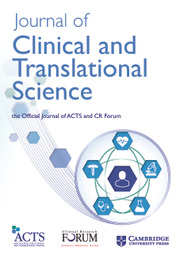No CrossRef data available.
Article contents
60 Investigating sociodemographic influence on trauma exposure and neural alterations in young adults
Published online by Cambridge University Press: 11 April 2025
Abstract
Objectives/Goals: This study aims to understand the prevalence of trauma in young adults and what sociodemographic factors influence trauma exposure and type of trauma. It also seeks to explore functional connectivity and neural network patterns associated with trauma by analyzing resting state magnetic resonance imaging (MRI) data. Methods/Study Population: Sociodemographic data will be analyzed from participants aged 18–25 years, such as age, gender, race, ethnicity, and highest level of education completed. Trauma exposure will be assessed based on the DSM-5 criteria of trauma through phone screenings and clinical interviews. The data will be categorized based on trauma type and statistical analyses will be conducted to explore potential sociodemographic patterns related to trauma. Additionally, resting-state MRI data will be utilized to identify potential neural correlates of trauma exposure. Results/Anticipated Results: It is anticipated that sociodemographic factors such, race and ethnicity, and highest level of school completed may influence the likelihood of experiencing traumatic events. It is predicted that in the resting-state MRI analysis that there will be altered functional connectivity in trauma exposed young adults in regions such as the amygdala, hippocampus, and prefrontal cortex since those regions are implicated in emotional regulation and stress response. Some changes may also be seen in the default mode network and salience network. Discussion/Significance of Impact: Trauma exposure can alter neural circuitry, leading to emotional processing difficulties and heightened stress response, with lasting effects on mental health and brain development. Prevention efforts and targeted treatments can be guided by identification of affected brain networks and sociodemographic factors that increase trauma risk.
Information
- Type
- Biostatistics, Epidemiology, and Research Design
- Information
- Creative Commons
- This is an Open Access article, distributed under the terms of the Creative Commons Attribution-NonCommercial-NoDerivatives licence (https://creativecommons.org/licenses/by-nc-nd/4.0/), which permits non-commercial re-use, distribution, and reproduction in any medium, provided the original work is unaltered and is properly cited. The written permission of Cambridge University Press must be obtained for commercial re-use or in order to create a derivative work.
- Copyright
- © The Author(s), 2025. The Association for Clinical and Translational Science

